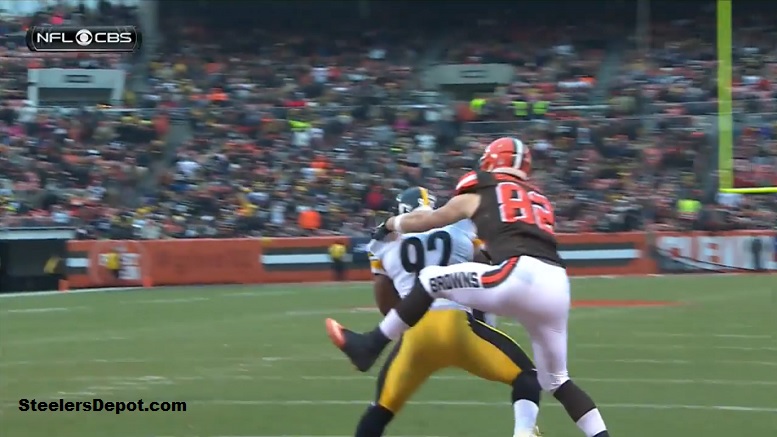The Pittsburgh Steelers have, by and large, been on an upward swing over the course of the past two and a half seasons after they missed the playoffs for two straight seasons, and failed to win a postseason game in four straight years.
Last season saw them gain that elusive playoff victory, though they came up short with about three minutes left in the Divisional round a week later. Their offense took off, and their defense improved, showing playmaking ability and opportunism.
But there are still a lot of unanswered questions facing the team as we crack into free agency territory. As an exercise, we like to take a stab at some of those questions, presenting arguments for the pros and cons of each side of the coin. This is the pessimist’s take on the following question.
Question: Have the Steelers really turned the corner as a defensive unit able to turn the ball over, or was last season a fluke?
Last season, in their first campaign under Keith Butler as defensive coordinator, the Steelers defense made significant strides in terms of producing turnovers, recording 17 interceptions and 13 fumble recoveries, numbers that outpace any total in the prior four seasons, which represented a significant decline since their 2010 Super Bowl appearance.
Although, perhaps, the determination of actually having made strides remains to be scene. The scientific method requires that results be repeatable, and the hypothesis here is that the Steelers have become a better team at taking the ball away. It would be best to hold off until we can get a view at a repeat performance.
There are some suggestions that the improvement is indeed authentic and not an aberration, but the simple fact is that turnovers are not easily produced in general, and require no small amount of luck, such as facing the sorts of running backs who fumble frequently or quarterbacks more prone to making errant throws or poor decisions.
And, of course, the Steelers faced an extended stretch of games toward the end of the season during which they faced a series of reserve quarterbacks, and that produced a lot of their turnover production last season.
In the season finale, for example, the Steelers intercepted Austin Davis twice and also recovered a fumble that he had lost. Pittsburgh also intercepted A.J. McCarron twice, and produced three total turnovers against Matt Hasselbeck. That is eight of their 30 total turnovers produced just from three backup quarterbacks, one of which stepped in during the middle of a game due to injury.
More to the point, the Steelers remain lacking in terms of production from their edge rushers, and much of their pressure last season that didn’t come from their defensive ends had to be manufactured, which can only be inconsistently successful.
The talent in the secondary outside of Mike Mitchell and William Gay are also lacking, and as for Mitchell, we can’t ignore that he failed to intercept a pass in 2014, even if he had three last season. Gay is not getting any younger, and the rest of the secondary is largely unproven.
It would be premature to conclude that the Steelers defense as currently constructed is one that can depend upon its ability to end drives by producing turnovers on a fairly consistent basis. After consistently poor results in that category for four seasons, a one-season aberration is not enough proof to suggest that the tide has turned, especially in a category so prone to ebbs and flows.







